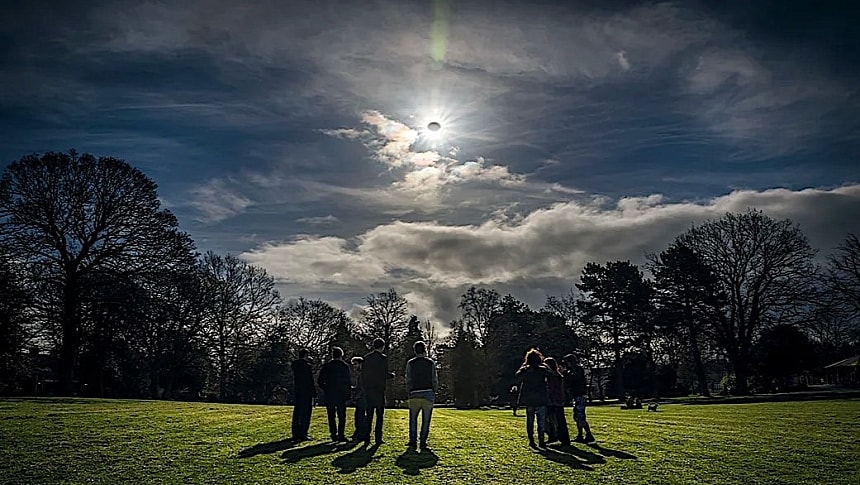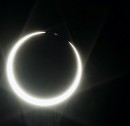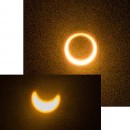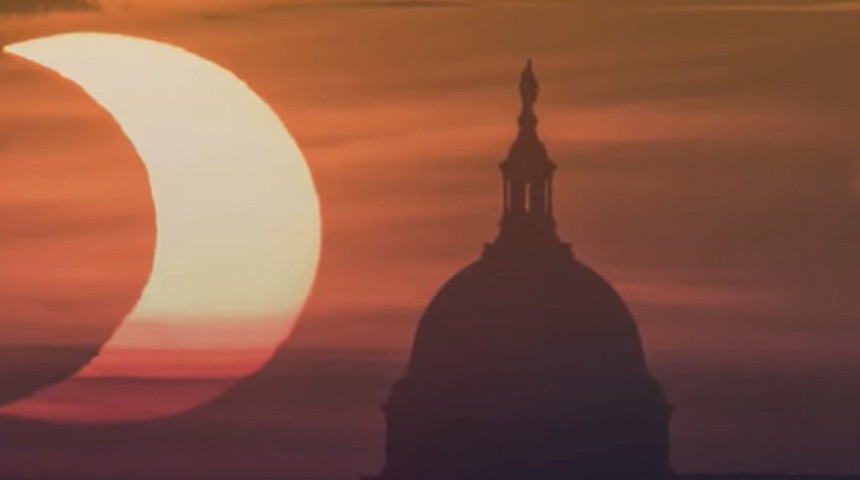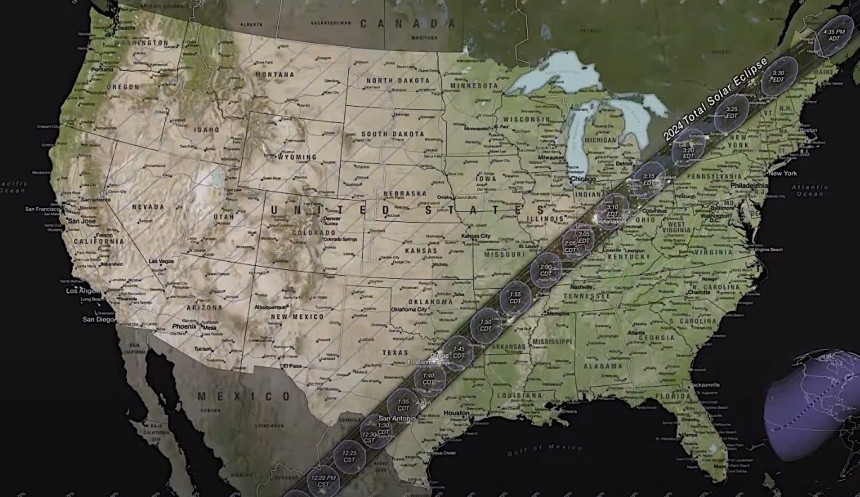Solar eclipses are among the few grandiose celestial shows we humans can enjoy firsthand and still feel relatively safe as they happen. But eclipses are dangerous in some sense too, especially to the eyes of the onlooker.
You all know how an eclipse occurs: the Earth, the Moon, and the Sun line up in perfect sync, with the Moon caught in the middle and blocking the rays of the Sun. That makes some areas of our planet be covered in complete darkness in the middle of the day, an event that in periodically feeds nightmares and superstitions.
This very natural occurrence will manifest itself this year as well. On April 8, less than a month from now, the Moon will move itself to block the rays of the Sun that light up the day in North America. It will be a gargantuan event that even got its own name (the Great North American Eclipse), with a total eclipse being visible throughout the day on a strip running from Texas to Maine.
Knowing this, Americans in these areas are bracing themselves for a celestial show that hasn't been witnessed on such a scale since 2017. Naturally, people are looking to get the most of it, and in they can only do that with the sense of sight.
But there are some precautions to be taken when looking at an eclipse. For instance, did you know that looking at the thing with your naked eye can cause serious damage?
You see, a human retina has no sensitivity to pain, and the Sun's burning light can wreak havoc on it without you even knowing. And that can happen even when the Sun is partially hidden behind the Moon and entices us the most to glance at it.
Looking at a solar eclipse without proper protection even for short periods of time can cause something called retinal burns. They are insidious things, as they don't manifest themselves for hours. When they do kick in, retinal burns can lead to either temporary or permanent eye damage: loss of vision, distorted vision, or altered color vision. And there is no cure for neither of these conditions.
There are, of course, safe ways to experience an eclipse without fear of losing sight, partially or totally. One could use pinhole projections or special sunglasses. But no, your phone's camera is not a good way to protect your eyes.
Now that almost every single one of us has a camera to-go, people will naturally be tempted to use those to snap instances of the historic moment. Some will even believe the phone camera is protection enough, or that applying certain software filters may help. It's not, and they won't.
Knowing the dangers people expose themselves to during solar eclipses, American space agency NASA published a short guide on how to take camera photos of the event and still keep your vision intact.
The first thing to remember it that no matter how fancy your phone is, it's not equipped to handle solar eclipses. So you'll need a special solar filter to protect the camera itself, and a pair of eclipse sunglasses to protect your eyes. You should keep both of these on for as long as the eclipse is partial. When totality occurs, you can remove the camera filter, but keep the glasses on.
Technically speaking the kind of camera you use for the snapshot doesn't really matter. As NASA says, "taking a stunning photo has more to do with the photographer than the camera." So don't beat yourself if you can only yield a low-resolution phone camera vs. your neighbors' DSLR.
You should however consider using a tripod or some other sort of stabilizing gizmo to make sure the picture you take is the picture you want. And you should also give stuff like adjustable exposures, zoom, and shutter speeds a look before the big event arives.
And that's about it, really. Just like the eclipse itself on a cosmic level, capturing it on camera safely is not such a big deal.
But how about NASA? How is the space agency going to use the eclipse to advance its knowledge of the Sun?
As revealed not long ago, NASA will use the moment to (hold on) prove the roundness of the Sun. Using eclipse movies created by the Americans that have enlisted as part of the SunSketcher phone app project, which will hopefully trace Baily's beads ("tiny slivers of sunlight that pass through the valleys on the surface of the Moon"), NASA will try to measure the Sun's exact shape and size.
We'll see what comes out of this project after the eclipse ends. The space agency is already confident that it will finally determine those crucial aspects of our star. If you're interested in taking part, you can do that here.
This very natural occurrence will manifest itself this year as well. On April 8, less than a month from now, the Moon will move itself to block the rays of the Sun that light up the day in North America. It will be a gargantuan event that even got its own name (the Great North American Eclipse), with a total eclipse being visible throughout the day on a strip running from Texas to Maine.
Knowing this, Americans in these areas are bracing themselves for a celestial show that hasn't been witnessed on such a scale since 2017. Naturally, people are looking to get the most of it, and in they can only do that with the sense of sight.
But there are some precautions to be taken when looking at an eclipse. For instance, did you know that looking at the thing with your naked eye can cause serious damage?
You see, a human retina has no sensitivity to pain, and the Sun's burning light can wreak havoc on it without you even knowing. And that can happen even when the Sun is partially hidden behind the Moon and entices us the most to glance at it.
There are, of course, safe ways to experience an eclipse without fear of losing sight, partially or totally. One could use pinhole projections or special sunglasses. But no, your phone's camera is not a good way to protect your eyes.
Now that almost every single one of us has a camera to-go, people will naturally be tempted to use those to snap instances of the historic moment. Some will even believe the phone camera is protection enough, or that applying certain software filters may help. It's not, and they won't.
Knowing the dangers people expose themselves to during solar eclipses, American space agency NASA published a short guide on how to take camera photos of the event and still keep your vision intact.
The first thing to remember it that no matter how fancy your phone is, it's not equipped to handle solar eclipses. So you'll need a special solar filter to protect the camera itself, and a pair of eclipse sunglasses to protect your eyes. You should keep both of these on for as long as the eclipse is partial. When totality occurs, you can remove the camera filter, but keep the glasses on.
You should however consider using a tripod or some other sort of stabilizing gizmo to make sure the picture you take is the picture you want. And you should also give stuff like adjustable exposures, zoom, and shutter speeds a look before the big event arives.
And that's about it, really. Just like the eclipse itself on a cosmic level, capturing it on camera safely is not such a big deal.
But how about NASA? How is the space agency going to use the eclipse to advance its knowledge of the Sun?
As revealed not long ago, NASA will use the moment to (hold on) prove the roundness of the Sun. Using eclipse movies created by the Americans that have enlisted as part of the SunSketcher phone app project, which will hopefully trace Baily's beads ("tiny slivers of sunlight that pass through the valleys on the surface of the Moon"), NASA will try to measure the Sun's exact shape and size.
We'll see what comes out of this project after the eclipse ends. The space agency is already confident that it will finally determine those crucial aspects of our star. If you're interested in taking part, you can do that here.
